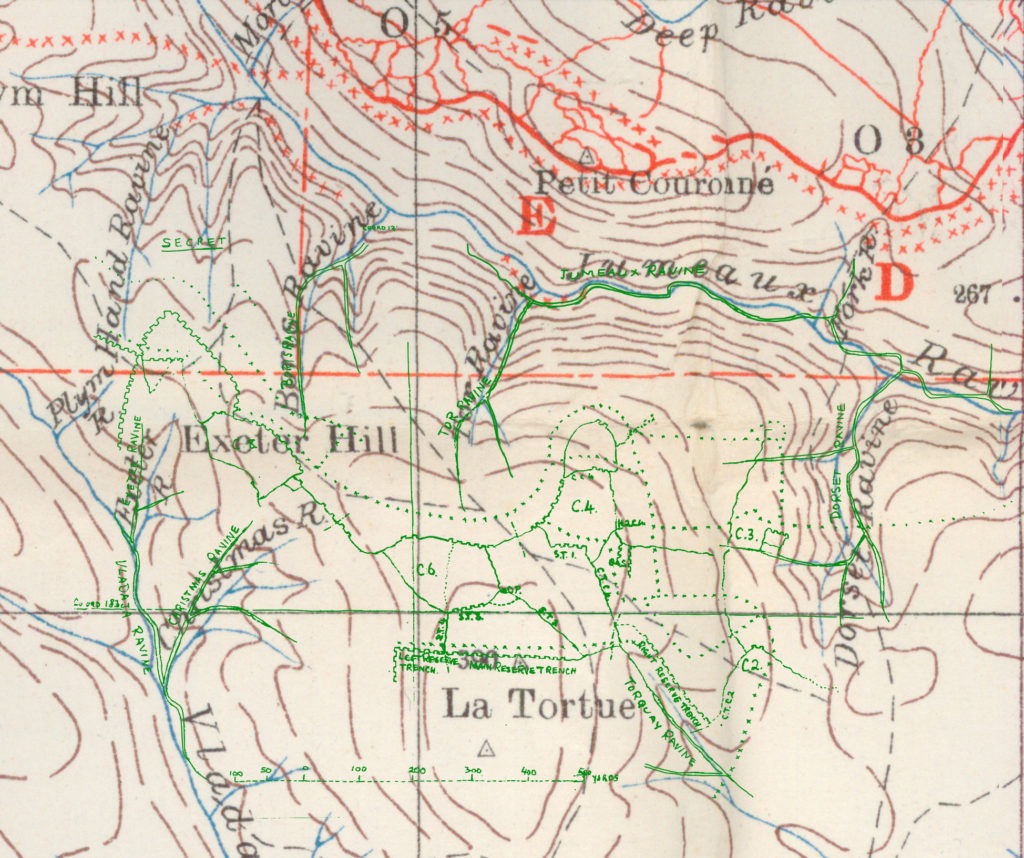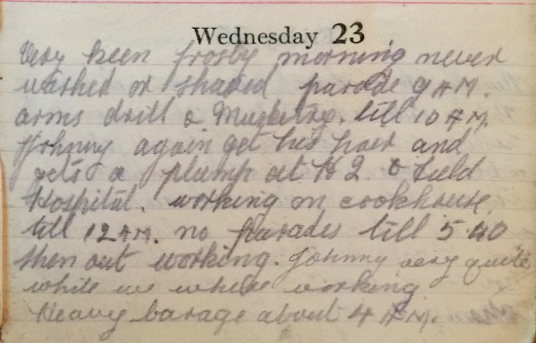Wednesday Jan 23rd, 1918
Very keen frosty morning, never washed or shaved. Parade 9am. Arms drill and musketry till 10am. Johnny again gets his hair and gets a plump at HQ and field hospital. Working on cookhouse till 12. No parades till 5:40 then out working. Johnny very quiet while we were working. Heavy barrage about 4am.
The Dojran (Doiran) Front
The Allied forces fighting in Salonika had divided up the front line amongst themselves. The British were responsible for a front of 90 miles. It comprised four distinct sectors. ‘From east to west these were the Struma Valley, the Krusha Balkan Hills, the main Doiran front and the Vardar sector that ran from west of Pip Ridge to the River Vardar. Around Doiran …. a beautiful natural landscape combined with the harsh geology in a way unique to the British front…..the (terrain) offered little more than a foot or two of soil above solid rock.’¹
Therefore building defensive positions was difficult.This issue was exacerbated by the facts that the enemy typically held higher ground and that the two lines were often less than 500 yards apart.
The Front & Reserve Lines
Thanks to some good detective work by members of the Salonika Campaign Society² we have managed to track down the map used by the Battalion and referenced in its diary. The following extract shows a part of the Dojran front, complete with enemy trenches and defences (in red). Upon this we have overlaid (in green) the Battalion’s sketch of the corresponding British front and reserve lines around Tortue (also see post for January 21st). Note, the link to the full map is provided below.

The illustration clearly shows no-man’s land, dominated by the natural features of the terrain, including the deep Jumeaux Ravine. With the two fronts so closely positioned, it is easy to understand the dangers faced by troops in both the front and reserve trenches.
13th (Service) Battalion War Diary – 23rd January 1918 – Vladaja Camp
Enemy artillery unusually active in burst during forenoon, these recurred at intervals during day. A 4” percussion shrapnel burst in one dugout wounded one and and knocking another down. Enemy aircraft – one plane came over in the evening, flying high. 1 OR is taken on from , 1 OR transferred from ASC voluntarily with effect from 10-1-18.
References & further reading
¹ ‘Under the Devils Eye: The British Military Experience in Macedonia 1915-18’ Alan Wakefield & Simon Moody. Kindle location 3004 for quote plus general information.
* Dojran Map, Edition 3A, June 1917 from the Digital Archive at McMaster University Library, Canada


